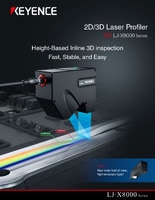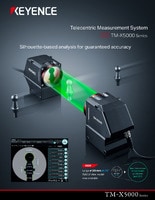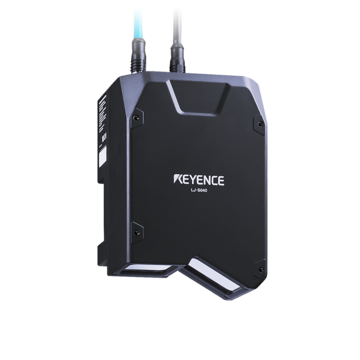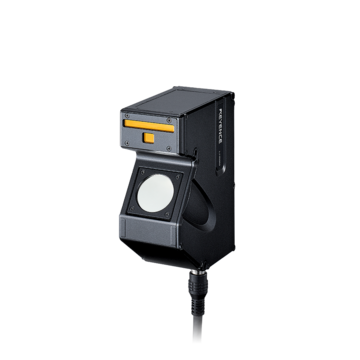Measurement Sensors
Dimension Measurement
Displacement Measurement
Automatic Electrical Connector Inspection
Electrical connectors are incredibly important components that help ensure the reliable performance of different systems; they exist in everything from everyday electronics to industrial equipment and machinery. Regular inspection of these connectors is critical to maintaining safety and preventing costly failures. Inspections also mitigate risks like short circuits and poor connectivity and prevent catastrophes like electrical fires. Neglecting routine maintenance and inspection can lead to damaged systems, downtime, and expensive repairs, all of which impact equipment efficiency and safety.
Get detailed information on our products by downloading our catalog.
View Catalog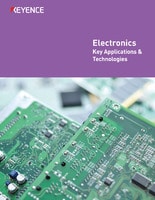

Importance of Electrical Connector Inspection
Faulty connectors present both immediate and long-term hazards. Beyond the aforementioned safety risks, damaged connectors also degrade the performance of an entire electrical system. For example, inefficient connections result in energy loss, which drives up operational costs and strain on other components. In high-stakes environments, such as aerospace applications, these risks multiply. A single defective connector can jeopardize entire systems.
In essence, regular electrical connection inspections are not just a routine matter. They are essential for safety and performance. Whether for your everyday appliance or a complex industrial network, inspections safeguard systems from failures.
Advanced Methods for Electrical Connector Inspection
As electrical systems become increasingly complex, traditional methods of inspection are proving inadequate. Manual inspections, while easy to implement, often rely on human judgment, which is prone to fatigue, inconsistency, and error.
Automated optical inspection (AOI) and AI-powered systems are transforming how we approach electrical connection inspection. AOI systems are excellent at detecting defects like misaligned and/or missing components. However, the integration of artificial intelligence (AI) takes these capabilities to the next level.
Advanced inspection techniques use tools like fiber inspection probes to enhance their accuracy. These probes offer visual data and help eliminate the risk of direct exposure to live signals for improved safety during the inspection process. Combined with AI algorithms, these tools enable a level of defect detection that far surpasses human-led inspections.
Automated systems deliver consistent results. This helps reduce the likelihood of missed defects and costly rework; it also translates into long-term savings for manufacturers. They also improve efficiency by inspecting multiple points at the same time, a feat that is impractical for human inspectors. With the adoption of these systems, manufacturers can stay ahead in their ever-competitive industries.
We’re here to provide you with more details.
Reach out today!

Importance of Pin Inspection of Connectors
Pins, ferrules, and end faces are important components of electrical connectors. They directly impact their alignment, functionality, and efficiency. Inspections are needed to maintain the integrity and reliability of electrical systems. Even minor imperfections can lead to signal loss, compromised performance, and, in some cases, total systems failure.
One of the most common issues is physical damage to pins or ferrules. Scratches, cracks, and misalignments can disrupt the precise alignment required for optimal signal transfer. Another issue is contamination. Whether it's dirt, oil, or moisture, the debris can lead to signal degradation or connectivity issues. A perfect example of this is where a single particle of dust on the connector end-face can block a portion of the signal, thus reducing performance and reliability of the end product.
To address these challenges, cleaning and maintenance procedures, like hybrid cleaning, are the most effective in removing the debris. Regular visual inspections using fiber probes and microscopes make sure that any damage or contamination is identified and rectified before it impacts performance.
Connector Inspection Prior to Connection
The first phase of an inspection involves identifying and addressing defects such as cracks, dents, discoloration, and general contamination. Visual inspections are the first line of defense as they allow technicians to detect surface-level issues that could cause issues with the connection. These inspections are essential in preventing small but often overlooked problems from escalating into full-blown failures.
Proper inspection before connection also minimizes the risk of contamination and helps prevent system downtime. Automated inspection systems powered by AI further improve the pre-connection inspection process. They are able to provide precision and repeatability as they are able to identify the most subtle defects. Inspecting connectors prior to connection is a needed step in maintaining system reliability.
Using AI-powered systems in your regular inspections can help ensure connector reliability and performance. KEYENCE has the solutions to optimize these processes. To ensure reliable connections with expert connector inspections, contact KEYENCE today.
Contact us to learn more about how our advanced technology can help take your business to the next level.
Contact Us
Related Products
Applications
Dimension Measurement
- Thickness and Width Measurement
- Step Height Measurement
- Inner and Outer Diameter Measurement
- Measuring Angles
- Meandering/Edge Measurement
Displacement Measurement
- Positioning and Stroke Length Measurement
- Vibration and Runout Measurement
- Deflection Measurement
- Measuring Eccentricity


